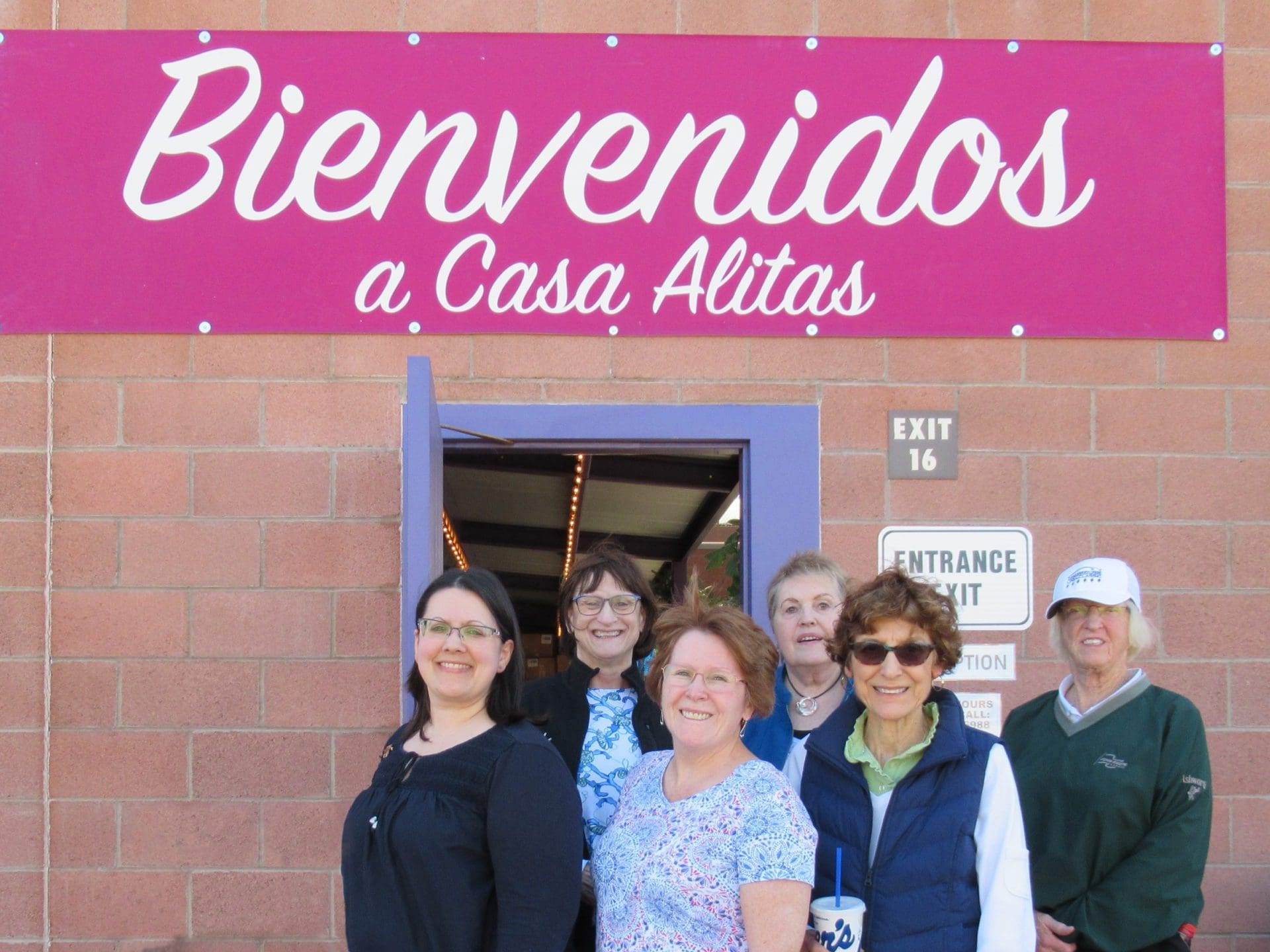COLLEEN JURKIEWICZ
CATHOLIC HERALD STAFF
News reports are the closest most Americans will come to experiencing what life is really like at the border between the United States and Mexico. For most casual consumers of media living in the 46 states that do not share a border with Mexico, it can be hard to discern between the reality of the situation and what has been manipulated by either political party for the purposes of shaping policy and legislation.

Associates Kelly Robe (from left), Janie Peck, Carol Braun, Wanda Roehl, Pat Belongie, Mary Beth Nienhaus at Casa Alitas, a respite center in Tucson, Arizona. (Submitted photo)
But last fall, associates of the Fond du Lac-based religious order of the Congregation of St. Agnes were able to see with their own eyes what it is like for persons attempting to enter the United States along the Arizona border.
From late October to early November, six CSA associates from Fond du Lac, Madison, Green Bay, Oshkosh and Appleton visited four sisters living and working at the border of Arizona and Mexico. The sisters each specialize in various services for the border community, including immigration law assistance, holistic health and spiritual direction.
The associates stayed with the sisters at their home in Bisbee, Arizona, accompanying them in their ministries to “gain a greater understanding of the mission of our sisters” who are working with the migrant population, said Carol Braun, director of associate relationship for the CSA, who organized the trip.
CSA Associates are women and men who choose to have an intentional relationship with the Congregation of the Sisters of St. Agnes, which was founded in Barton in 1858. There are 111 associates across the United States.
The associates described it as an opportunity to see the very real people who are living the headlines that have been splashed across the country for so many months and to experience the legal, humanitarian and logistical issues experienced by migrants and asylum-seekers.
A particularly poignant memory, said associate Patricia Belongie, was the group’s witness of four orphaned children at the Agua Prieta Migrant Center in Douglas, Arizona.
“The sight of those children frightened, alone, encircled, and clinging to each other left a stabbing pain in my heart and forever seared into my memory,” she said.
It was a scene that also stuck with associate Kelly Robe.
“I still think of them and wonder how they are, where they are, and who’s taking care of them,” she said.
After observing conditions at the border, the associates traveled to Tucson to learn about local educational and healthcare facilities like Casa Alitas, a Tucson-based respite center for asylum seekers.
While in Tucson, the associates were also able to observe a “streamlining” session at the federal courthouse. Associate Wanda Roehl described it as “an assembly line” of migrants who appeared, shackled, before a federal judge for sentencing.
“It brought tears to my eyes to think of how 110 men and women were given 20 seconds of ‘due process of law’ that sealed their fate — deportation,” she said. “In an hour and 50 minutes, 110 men and women were sentenced to return to the poverty, violence, and corruption of the places they had fled over many months.”
“Seeing defendants in court shackled at the ankles and wrists for a misdemeanor offense trial” was an unforgettable event to witness, said Robe. “When the bailiff said ‘All rise,’ the sound of chains clinked and filled the courtroom.”
According to reports released by the Pew Research Center, 851,508 apprehensions took place at the border between the United States and Mexico in the 2019 fiscal year (October 2018 through September 2019), representing a 115-percent increase from the previous fiscal year. Though that number is the highest it has been in 12 years, it remains below historic highs in the year 2000 and the 1980s. What is striking, according to the Pew Research, is that people traveling in families account for most of the apprehensions, and apprehensions of unaccompanied children ages 17 and younger reaching their highest on record.
Braun described the pilgrimage as a “threshold experience” that “stretched the borders of my soul, transformed me from the inside out.”
“I faced hard questions with no easy answers, held feelings of despair and hope, and learned the value of standing in solidarity with those in crisis,” she said.
The Congregation of St. Agnes has been vocal in their criticism of the Trump administration’s immigration policy, releasing statements condemning the separation of children and their parents at detention facilities and criticizing the treatment of immigrants at the border.
